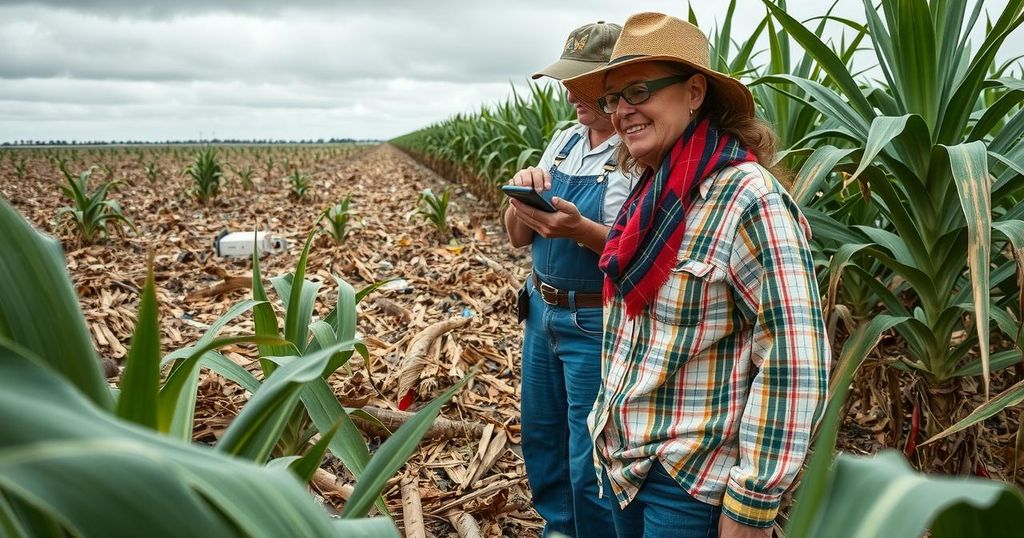Georgia Farmers Face Consequences of Hurricane Helene’s Devastation
In the wake of Hurricane Helene, Georgia farmers are recovering from severe damages, with estimated losses exceeding $10 billion across the South. Both crops and infrastructure were devastated, prompting state and federal responses for relief. Experts predict minimal impact on consumer prices, but producers face a challenging recovery landscape.
Farmers in Georgia are grappling with severe damages caused by Hurricane Helene, which struck more than two months ago, leaving a trail of destruction across agricultural lands. The hurricane destroyed crops such as cotton, squash, cucumbers, and pecan orchards while also wreaking havoc on farming equipment. Chris Hopkins, a local farmer, reflected, “I have wrestled with lots of emotions the past two months… It is emotionally draining.”
The economic impact on farmers and agribusinesses from Florida to Virginia is projected to exceed $10 billion, primarily from crop losses, timber destruction, and damaged farming equipment. Cotton farmers were particularly affected as the storm coincided with the fall harvest. Current estimates indicate Georgia alone suffered losses amounting to at least $5.5 billion due to this natural disaster. Comparatively, North Carolina faced losses of approximately $3.1 billion, with additional financial damages noted in Virginia, South Carolina, and Florida.
The extensive losses highlighted the vulnerability of crops during critical growth phases. Mr. Hopkins estimated a loss of 50% of his cotton, attributing his inability to recover losses solely through insurance to the extensive damage incurred. Other farmers similarly reported losses of infrastructure, particularly in the poultry sector, where many houses were destroyed. Jeffrey Pridgen, a long-time farmer, noted, “I lost my retirement and my income in one day.”
As a response to the disaster, the Georgia state government reallocated $100 million towards emergency funding for affected farmers. Despite their efforts, state laws restrict direct aid to private businesses. Meanwhile, Congress has suggested a federal plan to grant substantial disaster relief to farmers on a national scale.
Despite the catastrophic impacts, experts maintain that consumer prices are unlikely to be significantly affected because of the availability of crops from other agricultural areas. However, the pecan sector may see some market fluctuations given Georgia’s significant contribution to national production. Taylor Sills of the Georgia Cotton Commission summed up the industry’s plight, stating, “There are people who lost everything and there are people who didn’t. But everybody lost something.”
Hurricane Helene made landfall as a major Category 4 storm on September 26, 2023, impacting states from Florida to Virginia. The hurricane’s path resulted in catastrophic losses for farmers, whose crops and infrastructure sustained substantial damage during the storm. This event follows a pattern of severe weather conditions affecting U.S. agriculture, exacerbated by financial and operational uncertainties inherent to farming, particularly in high-risk areas.
Farmers are still working through the aftermath of Hurricane Helene, confronting overwhelming losses and the burden of recovery. While state and federal support is being organized, many farmers face a long road to rebuild their operations and livelihoods. The extensive damages highlight the vulnerability of agricultural systems to natural disasters, emphasizing the need for comprehensive support structures for affected agricultural communities.
Original Source: abcnews.go.com




Post Comment